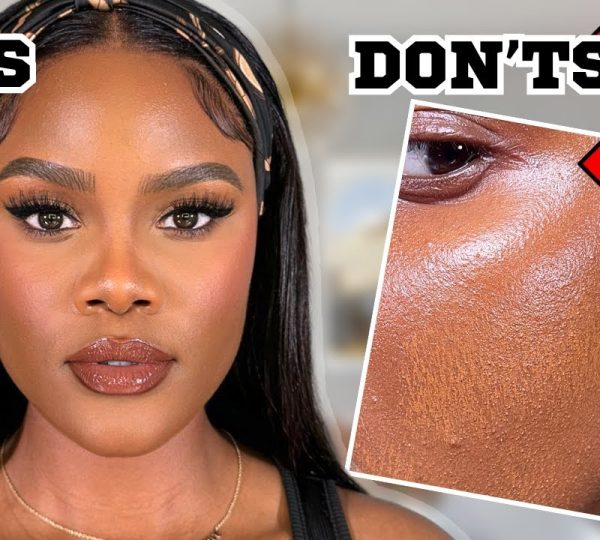The Influence Economy in African Beauty Sector

Africa’s beauty and personal care market is on a robust growth trajectory, projected to expand by USD 8.18 billion between 2024 and 2028 at a CAGR of over 8%, driven by urbanisation, rising incomes, and rising health and wellness awareness. Within this large market, the cosmeceutical segment—skincare products with active ingredients—will reach USD 4.05 billion in 2025, signalling strong consumer willingness to pay premiums for proven efficacy. For beauty marketers, these figures underscore both the scale of opportunity and the need for strategies that resonate locally, leveraging digital channels where the next generation of consumers lives and shops.
Personal recommendations have always been powerful, but in recent studies, up to 79% of African consumers say they trust peer-reviewed influencer recommendations more than traditional advertising. This near-universal trust transforms influencers into de facto brand ambassadors whose endorsements can drive rapid uptake of new products. In fact, when brands involve influencers in product design—co-creating shades or formulations—these launches can achieve up to 600% ROI compared to one-off paid promotions.
Micro-influencers, typically defined as creators with 10,000–100,000 followers, have emerged as especially cost-effective. Their smaller, highly engaged audiences often see engagement rates two to three times higher than those of macro-influencers, while production and partnership costs can be up to 50% lower. By using advanced analytics to identify and activate these niche voices, brands can stretch budgets further and achieve more precise targeting, reaching segments defined by skin type, hair texture, or even local language.
Strategic Takeaway: Embed influencers into your brand roadmap by inviting them into R&D, structuring campaigns around performance metrics (likes, shares, conversions), and offering tiered incentives. This approach not only secures authentic content but also aligns creator compensation with business outcomes.
Digital Communities: Turning Engagement into Loyalty
Beyond individual voices, digital communities on platforms like WhatsApp, Instagram groups, and TikTok “Duet” chains form the backbone of African beauty culture. These spaces—where users swap DIY recipes and troubleshoot skincare routines in real time—create peer networks that drive both discovery and loyalty.
User-generated content (UGC) is the currency of these communities. Brands featuring UGC on product pages report up to a 20% lift in e-commerce conversion rates, as shoppers feel reassured seeing real people use products in authentic contexts. Meanwhile, the broader beauty and personal care industry enjoys an average conversion rate of 4.92%, boosted by strong brand loyalty and repeat purchase behaviours.
Leading beauty companies host weekly livestream Q&A sessions, solicit community votes on new launches, and reward top contributors with early access or co-branding opportunities. This two-way dialogue not only deepens emotional bonds but generates continuous feedback for product innovation, ensuring brands stay ahead of emerging trends.
Search interest in terms like “African beauty influencers” has risen drastically as consumers seek authentic, relatable content. This report explores how brands can use platforms and personalities to build deeper connections. It examines the rise of short-form video, the power of micro-influencers, and strategies for cultural relevance.
Download the full report →
Short-Form Video: Capturing Attention in Seconds
Short-form video drives discovery and action in 2025. TikTok’s “For You” page delivers 30–40% higher average view counts on beauty content than Instagram Reels, while Reels account for 35% of total Instagram engagement. On YouTube Shorts, beauty tutorials achieve 9–11% engagement rates, outpacing longer formats and feeding viewers into deeper content journeys.
Successful campaigns blend entertainment with education. Nigerian brands, for example, launch hashtag challenges showcasing quick routines—#GlowUp30Sec—prompting thousands of user videos that amplify reach organically. Meanwhile, AR-powered try-on filters on Reels let shoppers virtually test lipstick or eyeshadow in real time, reducing purchase hesitation and returns.
Strategic Takeaway: Develop a cross-platform video playbook.
- TikTok: Drive viral participation with branded challenges and influencer duets.
- Instagram Reels: Leverage shoppable tags and AR filters for instant purchase.
- YouTube Shorts: Produce evergreen “five-product face” tips linking to full tutorials and product pages.
The Influence Economy in African beauty is not a collection of disparate tactics but a cohesive framework. By integrating authentic influencer collaborations, vibrant community engagement, and tailored short-form video, brands can convert trust into transactions, turn engagement into loyalty, and capture attention in a crowded digital landscape.
Download the full report for a strategic roadmap on how African consumers engage with creators, which platforms shape purchase decisions, and how to build authentic, lasting influencer partnerships.
Click to Download the Full Report
Ready to invent the future?
Our teams possess extensive in-market experience that drives measurable growth for brands. Please reach out to us to learn more.
